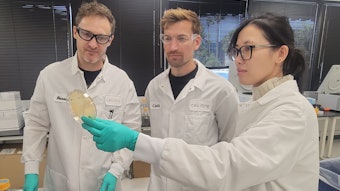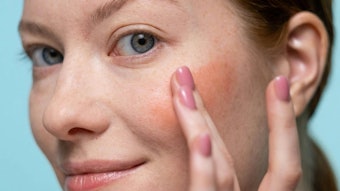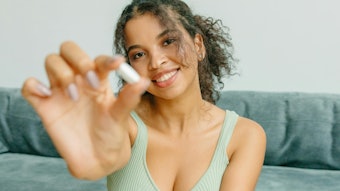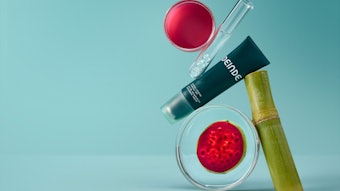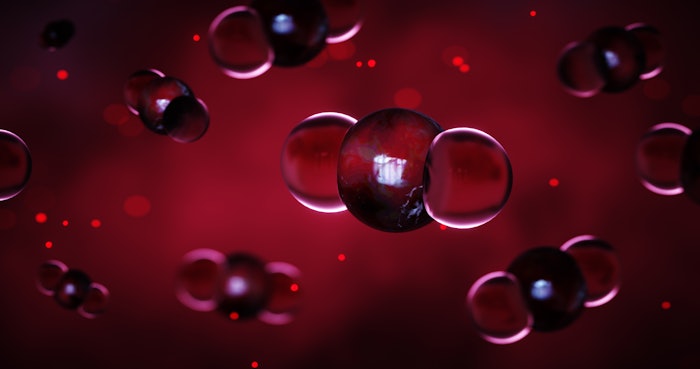
 Development of a palm oil-free formulation at the Mibelle Group Lab.Mibelle Group
Development of a palm oil-free formulation at the Mibelle Group Lab.Mibelle Group
Log in to view the full article
 Development of a palm oil-free formulation at the Mibelle Group Lab.Mibelle Group
Development of a palm oil-free formulation at the Mibelle Group Lab.Mibelle Group
In 2022, Nivea Men launched the "Climate Care Moisturizer," a skin care product featuring ethanol derived from recycled CO2 produced through carbon capture utilization (CCU) technology. Partnering with LanzaTech, a specialist in gas fermentation, Beiersdorf sourced ethanol created by capturing CO2, fermenting it in a bioreactor and processing it into cosmetic-grade ethanol. This sustainable ethanol met purity standards required for skin compatibility while also supporting climate protection.
This wasn’t LanzaTech’s only beauty collaboration. In 2021, Coty announced a partnership with LanzaTech to introduce sustainable ethanol made from captured carbon emissions into its fragrance products. The next year, Givaudan and LanzaTech announced a collaboration for the development of sustainable fragrance ingredients from renewable carbon.
But that was just the beginning of captured CO2 innovation.
The Palm Oil Alternative Designed to Save Rainforests
 Demand for palm oil has led to mass deforestation; captured carbon may offer an alternative to plant-based sources for this in-demand ingredient.whitcomberd at Adobe Stock
Demand for palm oil has led to mass deforestation; captured carbon may offer an alternative to plant-based sources for this in-demand ingredient.whitcomberd at Adobe Stock
The breakthrough reportedly replicates the key benefits of palm oil—heat resistance, extended shelf life and high yields—while eliminating the need for rainforest destruction and the CO2 emissions linked to palm oil cultivation.
The project taps LanzaTech biotech processes to convert captured CO2 into alcohol, similar to beer brewing.
From there, a fermentation process primarily developed by Fraunhofer IGB transforms the alcohol from the previous step into desirable fats using specialized oil yeasts.
Per the companies, "both fermentation stages rely exclusively on naturally occurring, non-genetically modified microorganisms." The resulting palm-free fats have "outstanding" skin care properties, per the organizations.
The companies have now progressed to a kilogram-scale production of the palm oil-like fat blend by scaling up the fermentation processes at the Fraunhofer Center for Chemical-Biotechnological Processes CBP in Leuna, Germany.
CO2-Based Surfactants
 Econic Technologies recently launched its Recreaire carbonate ethoxylate surfactants, derived through a platform technology that uses carbon dioxide as a key raw material. Econic Technologies
Econic Technologies recently launched its Recreaire carbonate ethoxylate surfactants, derived through a platform technology that uses carbon dioxide as a key raw material. Econic Technologies
As the company explains, Recreaire enables both workhorse surfactants and tailored molecules, including fatty alcohol ethoxylate (FAE) alternatives and ethoxy sulfates. Varying the amounts of CO₂ by up to 45% enables the introduction of new properties into the molecular structure, reportedly creating unique benefits for products across industries.
The first three FAE equivalent concepts introduced with different CO₂ incorporation levels include:
- Recreaire 10RC30,
- Recreaire 13RC28 and
- Recreaire 14RC21.
Each variant offers distinct characteristics and benefits tailored to specific applications.
In general, the Recreaire line is applicable across industrial and institutional cleaners, personal care, coatings, agriculture, metalworking fluids and lubricants. Additional aspects include:
- Effective in nonionic, anionic and cationic formulations;
- Liquid in form, with excellent handling properties;
- Stable across a range of conditions; and
- Odorless or low-odor, suitable for clear formulations.
According to the company, an independent lifecycle analysis shows that Recreaire delivers up to a 65% reduction in global warming potential (GWP) (CO2-equivalent emissions), compared with conventional fatty alcohol ethoxylates. This increases to 75% when comparing the hydrophobe components of Recreaire FAE replacements to conventional fatty alcohols.
Additional reported advantages include:
- Biodegradable (OECD),
- No detectable 1,4-dioxane,
- Compatible with existing alkoxylation assets and
- Does not compete with food-grade carbon sources.
The launch of Recreaire builds on Econic’s broader portfolio of renewable carbon technologies, which also includes polyols made from CO₂. The company has several commercial agreements with polyol producers in the United States, Europe and Asia.
 U.K.-based Viridi has launched Vireya, an anionic surfactant created using captured CO2 as its principal feedstock. Viridi
U.K.-based Viridi has launched Vireya, an anionic surfactant created using captured CO2 as its principal feedstock. Viridi
The 1,4-dioxane-free drop-in replacement for SLES and other anionic surfactants supports the reduction of personal care product carbon emissions by as much as 70%, in part by eliminating palm-derived feedstocks.
It also purportedly lowers costs, while improving performance via enhanced cleaning capabilities and a 10x boost in skin mildness.
Viridi's solid, reusable catalyst platform converts captured CO2 into surfactant intermediates. Commercial deployment of the ingredient could come as soon as next year, per the company.
“Vireya marks a fundamental step change in surfactant chemistry,” said Daniel Stewart, Ph.D., CEO of Viridi. “By replacing palm-based feedstocks with captured carbon dioxide, we are enabling the industry to drastically reduce product carbon footprint, ensure compliance with tightening regulations, and deliver better performing ingredients for consumer products. Crucially, manufacturers can produce Vireya using their current assets.”
From Pollution to Perfection: How CO₂ is Revolutionizing Beauty Products
The use of captured CO₂ in beauty and personal care products demonstrates the immense potential of innovative, sustainable technologies to address both environmental challenges and consumer demands. From skin care to fragrances, palm oil alternatives to surfactants, these advancements showcase how industries can repurpose greenhouse gases into valuable resources, reducing environmental impact while maintaining product quality. As collaborations between biotech pioneers and leading brands continue to grow, the future of beauty and sustainability appears increasingly intertwined. By turning CO₂ from a pollutant into a building block for innovation, the industry is redefining what’s possible.




